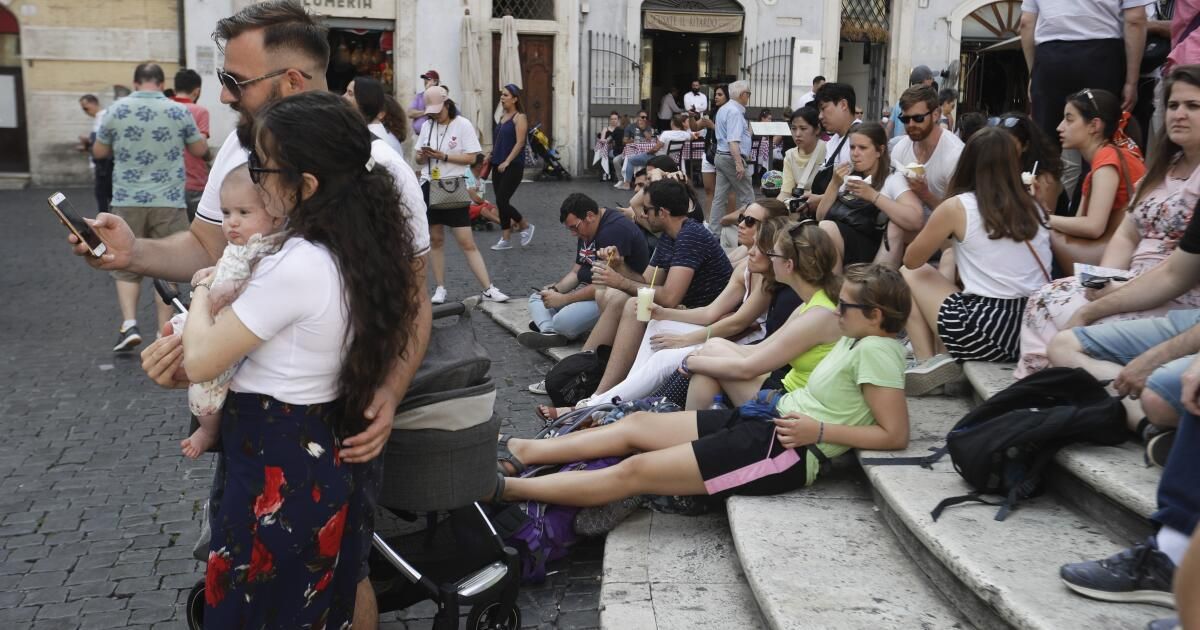Ten years ago, in an opinion piece for the Los Angeles Times, Rick Steves Recommended readers To get them to swallow their fear of terrorism and disease, “just get on a plane” and go out to see the world. And who am I to disagree with a dear travel writer and fellow Norwegian-American?
But after returning from a three-week trip visiting family and sights in Norway and Italy, my advice is a little different: Maybe don't get on that plane, especially if, like me, you're worried that tourists are ruining the world.
My advice has nothing to do with conflict or pests. Or maybe it does, because from what I saw, the hordes of humans who burn tons of jet fuel on their journeys to faraway places to trample on sites known for their beauty and history could be described as pests.
The consequences of overtourism are well known, especially in the ill-fated places that are its targets: cities built in a distant era or natural wonders become victims of their own charm, attracting far more people than they can handle. Pristine wildlife areas degrade, markets and butcher shops that sustained locals give way to souvenir shops, and residents are displaced as their homes become short-term rentals. There is no low season:Since pandemic restrictions were lifted, October crowds in Europe's hotspots are like July crowds 10 or 20 years ago, and today's July is… apocalyptic.
Fortunately, overtourism can be solved on its own. Being part of the problem, as I recently did on a trip to Norway and Italy with my family, is such a miserable and money-consuming experience that you'll be determined never to do it again.
Take the Spanish Steps in Rome, where I saw The sweet life Confrontation with the tourist police state. There, the magnificent operatic performances of Italian street artists were occasionally interrupted by the whistles of street policemen scolding anyone who dared to sit down on a scorching hot day. Crowds in Rome have become so bad, so incompatible with the preservation of structures that have survived hundreds and even thousands of years of human use, that it is now It is illegal to sit in certain places.
Perhaps this new hostility towards visitors will benefit visitors. The crush of people heading to places like the Plaza de España and the strict surveillance of guards will mean that most who venture there will want to leave as soon as possible.
Unfortunately, this also applies to Venice, which could be considered the European example of the fight against overtourism. If there was a sector of the economy dedicated to something other than tourism, I did not notice it.
The population residing in the historic centre of Venice has fallen below 50,000a level not seen since the Middle Ages. Much of the housing that once served locals is now rented out to visitors like me. Nothing screams old-world authenticity more than hordes of brightly dressed people lugging suitcases down the street or striking the most unnatural Instagram poses so they can show off their wonderful lives.
Venice is finally fighting back. Last April, day visitors began having to wait in line for a night. pay an entrance fee of 5 eurosIn addition, large cruise ships have been banned from entering the Venetian Lagoon. Similarly, in Norway, Bergen (which is really the most perfect city in the world) limits cruise ship disembarkation to 8,000 passengers per day, and even below that limit, Bergen’s historic waterfront easily becomes overcrowded.
The good news is that to enjoy the post-pandemic travel experience, you don’t have to fly to Europe. Just drive down the 5 Freeway to Disneyland on a summer day, spend $800 on family tickets, and soak up the sun with a few thousand eager strangers.
There, in Tomorrowland, you will perform the mental gymnastics I did at the Vatican: tell yourself this is beautiful and fun, dammit, because we paid for it, regardless of the truth exposed by your whining children, your burning skin and your suffocating claustrophobia. While I was outside.
Next time I plan another trip, Norway might be an option, since most of my late mother's family is there. But as far as sightseeing and tranquility go, nothing beats the places the locals know in the mountains and deserts of California. Meet me there.












